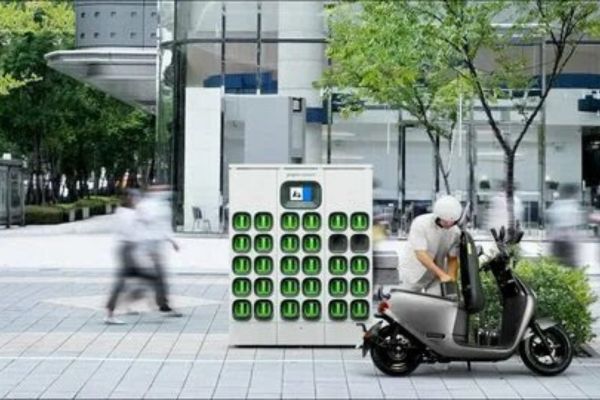As electric vehicle (EV) adoption accelerates globally, the spotlight is shifting from vehicle design to infrastructure innovation. Among the most disruptive developments in this space is battery swapping—an alternative to conventional charging that enables electric vehicle users to exchange depleted batteries with fully charged ones in a matter of minutes. The Battery Swapping Market is not only enhancing the convenience and scalability of EV ownership but also reshaping the broader mobility landscape. This transformative trend is driving a rethinking of urban transportation models, energy distribution, and business logistics.
Rise of Battery Swapping: Why Speed and Scalability Matter
In the current EV ecosystem, long charging times remain one of the most significant pain points for users. Traditional charging stations can take anywhere from 30 minutes to several hours to fully charge a battery, creating bottlenecks and downtime. Battery swapping offers a compelling solution—by instantly replacing a drained battery with a charged one, vehicle uptime increases dramatically, making the model especially attractive for commercial fleets, delivery services, and two- and three-wheelers in densely populated urban centers.
According to Fairfield Market Research, the Battery Swapping Market is witnessing substantial momentum in emerging markets such as India, China, and Southeast Asia, where cost sensitivity and operational efficiency are vital for mass EV adoption. The ability to scale fast and serve high-density urban regions makes battery swapping a key enabler for the EV future.
How Battery Swapping Is Disrupting Traditional EV Charging Infrastructure
Unlike fixed charging stations, which require prolonged plug-in time and heavy electrical load management, battery swapping stations can serve more vehicles per hour with a smaller energy footprint. These stations house pre-charged batteries, which are loaded onto vehicles using automated or semi-automated machinery.
This model allows vehicle manufacturers and service providers to decouple battery ownership from vehicle ownership. Users essentially lease the battery and pay only for energy consumption, which reduces the upfront cost of EVs and opens the doors to Battery-as-a-Service (BaaS) business models. The Battery Swapping Market is evolving to accommodate not just consumer vehicles, but also commercial fleets and public transport systems, especially in Asia.
Urban Mobility Reimagined: What Battery Swapping Means for Cities
In fast-paced cities where transportation downtime can result in economic loss, battery swapping stations provide a scalable infrastructure alternative. Swapping technology ensures that taxis, rickshaws, and delivery scooters can stay on the road longer without long pit stops. For municipalities pushing for electrified public transit, battery swapping presents a feasible method to keep buses and public vehicles running efficiently.
Moreover, the modular design of swapping stations allows them to be installed in compact areas, such as fuel stations, parking lots, or even underutilized urban spaces. As governments push for net-zero emission goals and reduced dependency on fossil fuels, the Battery Swapping Market is gaining attention as a viable, practical solution that can be quickly integrated into the existing urban infrastructure.
The Role of Standardization and Interoperability
A key barrier to mass adoption of battery swapping is the lack of standardization across EV manufacturers. Each company designing proprietary battery sizes and connectors results in fragmented infrastructure and operational inefficiencies. However, global initiatives are now focusing on creating universal battery standards to promote interoperability between vehicles and stations.
In regions like China, where regulatory bodies have pushed for standardized battery packs, the Battery Swapping Market has seen significant growth. Standardization not only makes swapping stations more versatile but also reduces costs for manufacturers, station operators, and consumers. Once interoperability becomes widespread, the scalability of battery swapping could rival or even surpass traditional EV charging models.
Economic and Environmental Impact of Battery Swapping
Battery swapping holds significant economic potential by creating new revenue streams, reducing EV upfront costs, and increasing asset utilization. Fleet operators can optimize battery use by rotating them more efficiently, reducing idle time, and extending the life of the battery through managed charging.
From an environmental perspective, centralized charging at swapping stations can enable smarter load balancing and integration with renewable energy sources. Batteries can be charged during off-peak hours or when solar and wind energy are most available, reducing pressure on national grids. Additionally, since battery health can be monitored in a controlled environment, degraded batteries can be easily identified, repurposed, or recycled—contributing to circular economy goals.
Leading Players and Emerging Partnerships in the Battery Swapping Ecosystem
A number of startups and established giants are investing in the Battery Swapping Market. Companies like Gogoro in Taiwan, Nio in China, and SUN Mobility in India are pioneering swapping station networks and hardware innovations. These companies are forging partnerships with EV manufacturers, energy providers, and government bodies to expand their infrastructure.
Strategic collaborations between automakers and battery solution providers are also driving market expansion. These partnerships not only ensure compatibility but also help accelerate regulatory approvals and customer acceptance. As the technology matures, new players are expected to enter the market, including oil companies looking to transition toward clean energy solutions by converting existing fuel stations into battery swap centers.
Challenges Ahead: What Needs to Be Solved
Despite its promise, battery swapping is not without challenges. High infrastructure setup costs, battery standardization issues, and limited consumer awareness are all hurdles to overcome. Moreover, ensuring battery safety, thermal management, and theft prevention in a public swapping ecosystem requires advanced monitoring systems and regulatory frameworks.
Furthermore, while battery leasing reduces vehicle purchase costs, it also requires a shift in consumer mindset—from owning to sharing critical components of a vehicle. Educating consumers on the benefits of this model is essential for the widespread adoption of the technology.
What’s Next for the Battery Swapping Market?
Looking ahead, the Battery Swapping Market is expected to witness rapid advancements in AI-powered station automation, predictive maintenance, and real-time fleet analytics. Governments are beginning to recognize battery swapping as a policy priority, offering subsidies and incentives to startups deploying this technology at scale.
As EV demand surges and urban centers become increasingly congested, the ability to provide quick, clean, and cost-effective energy to vehicles will define the next wave of mobility. Fairfield Market Research anticipates robust growth in battery swapping over the next decade, particularly in Asia-Pacific, where dense urban populations and commercial fleets create ripe conditions for mass adoption.
The evolution of the Battery Swapping Market signals more than just a technical innovation—it represents a shift toward smarter, shared, and sustainable mobility. From reducing EV costs to enabling energy-efficient transportation ecosystems, battery swapping stands poised to play a pivotal role in the next phase of electric mobility. As collaboration between governments, automakers, and energy providers strengthens, the future of urban transportation is likely to be built on fast, flexible, and scalable power delivery solutions—exactly what battery swapping offers.

















